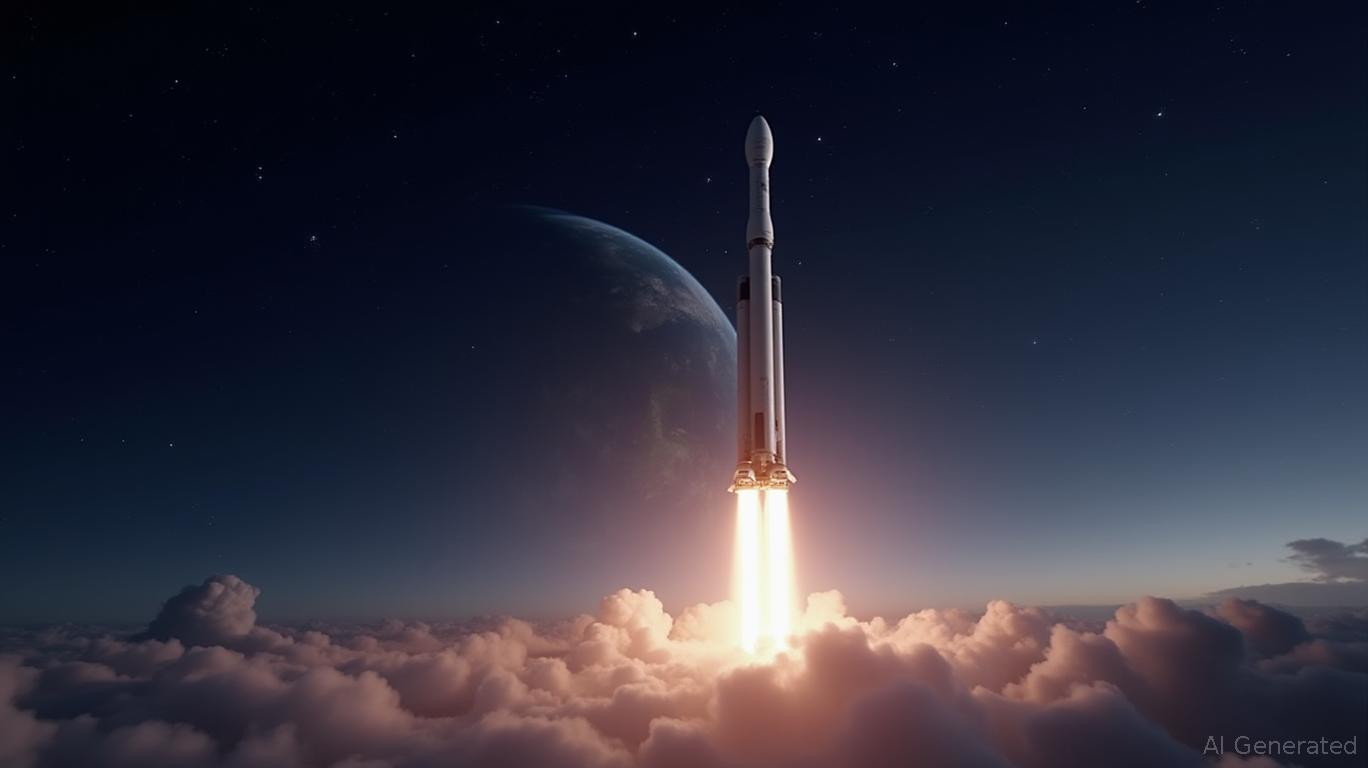Starlink's Galactic Ambition: Navigating Scalability in the Satellite Communication Revolution
The global satellite communications market is undergoing a seismic shift, driven by SpaceX's Starlink, a constellation of satellites redefining connectivity. With over 7,000 operational satellites as of June 2025, Starlink has already outpaced its rivals in scale and innovation. But as the firm races toward its goal of 42,000 satellites, investors must ask: Can this pace endure? And where lie the opportunities in this crowded race to orbit?

The Starlink Phenomenon: Dominance Through Scale
Starlink's 170+ launches planned for 2025—a 30% increase over 2024—highlight its relentless pace. By leveraging reusable Falcon 9 boosters (some flying 25+ times), SpaceX has slashed launch costs to $25 million per mission, a 70% discount over traditional rockets. This cost efficiency fuels its $10 billion project, enabling coverage in regions like rural Africa (where 60% lack internet) and maritime zones.
But scalability isn't just about numbers. Starlink's V2 Mini satellites now boast four times the bandwidth of earlier models, while its Direct-to-Cell technology (deployed on 400+ satellites) eliminates the need for specialized hardware. Partnerships like United Airlines' in-flight Wi-Fi (targeting 200+ Mbps speeds) underscore its pivot to enterprise and consumer markets alike.
Competitors in the Cosmos: Challenges and Opportunities
While Starlink leads, rivals like China's SpaceSail (targeting 15,000 satellites by 2030) and Amazon's Project Kuiper (3,236 satellites planned) are gaining traction. Yet they face hurdles:
- Geopolitical Risks: SpaceSail's state-backed model raises concerns about data sovereignty, akin to Huawei's controversies.
- Technical Barriers: Kuiper's delayed launches (only 27 satellites deployed by April 2025) lag far behind Starlink's 7,000+ fleet.
- Market Fragmentation: While Telesat and OneWeb target niche enterprise/government markets, none rival Starlink's 5.4 million global subscribers.
Scalability: The Double-Edged Sword
Starlink's success hinges on overcoming three critical challenges:
- Orbital Debris: With 8,500+ satellites launched, collision risks grow. SpaceX's active debris removal plans and phased constellation updates are mitigating this, but regulatory scrutiny remains.
- Regulatory Headwinds: The EU's push for “digital sovereignty” and India's delayed Starlink approvals highlight geopolitical pushback.
- Financial Sustainability: Maintaining a $10 billion annual investment requires subscriber growth and pricing discipline.
Yet these challenges also create opportunities. Investors can capitalize on:
- Infrastructure Plays: Companies like AST SpaceMobile (direct-to-phone tech) or Aalyria (cross-vendor network software) fill gaps in Starlink's ecosystem.
- Geopolitical Arbitrage: Firms like OneWeb thrive in regions wary of U.S. dominance.
- Adjacent Markets: Starlink's Starshield (military-grade satellites) and Starship (heavy-lift rockets) open doors to defense and deep-space logistics.
Why Invest Now?
The satellite communications market is set to boom, with revenues projected to hit $297 billion by 2029 (8.99% CAGR). Starlink's first-mover advantage and $25 million/launch cost efficiency lock in a near-insurmountable lead.
For investors, the path forward is clear:
- Direct Exposure: Bet on SpaceX (though private) via public partners like Maxar Technologies (satellite manufacturing) or Viasat (legacy infrastructure).
- Themes Over Stocks: Target low-latency tech, debris mitigation, or direct-to-device solutions through ETFs like ARKW (innovation-themed).
- Geopolitical Plays: Invest in regional champions like Hispasat or SKY Perfect JSAT, which leverage local demand without competing head-on.
Final Verdict: The Sky's the Limit
Starlink's 7,000+ satellites, $10 billion war chest, and operational cadence make it the Airbnb of space—a disruptor rewriting the rules. While risks exist, the $297 billion market and underserved regions (e.g., Africa's $100 billion connectivity gap) ensure demand.
Investors ignoring this revolution risk missing the next trillion-dollar industry. Act now—before the stars align for someone else.
—Roaring Kitty

Comments
No comments yet